This article describes the types of underground cables. Underground cables are used for power transmission from the generating station to the distribution substation. Unlike overhead transmission lines, these cables are laid underground in places where it is impractical, complex, or dangerous to use overhead transmission lines. These are mainly used in areas that are densely populated, and their initial cost is higher in comparison to that of the overhead transmission line of similar capacity.
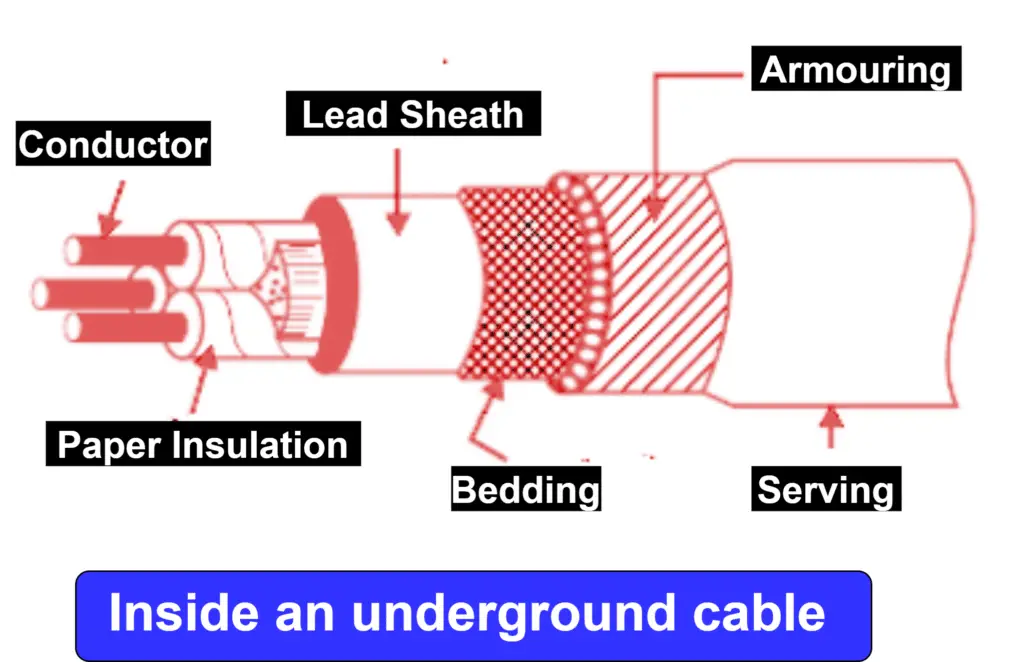
Types of underground cables
Underground cables are of various types and can be classified under various heads. The following are the criteria for the classification of underground cables.
- Voltage rating
- Number of conductors in the cable
- Type of insulation
- Construction of cables
- Installation
Types of underground cables based on the Voltage rating
The system voltage at which the cable is intended to operate is an important criterion for classifying these cables. The level of insulation, current carrying capacity, impedance, etc., is decided based on the voltage rating.
Different cables are operating at different voltages, like
- Low-voltage cables: Those operating at voltages up to 1kV.
- High-voltage cables: Operating voltage up to 11kV.
- Super tension cables: Operating voltage up to 33kV.
- Extra High tension cables: Operating voltage up to 66kV.
- Extra super voltage cables: Operating voltage beyond 132kV.
Higher voltage cables are used in power transmission as the generated voltage is increased to a higher value to reduce the current for transmitting a certain amount of power. The higher the voltage level, the thinner the cable will be, thus reducing its weight, cost of installation, and impedance.
Types of underground cables based on the number of conductors
This classification is based on the following criteria
- The intended load the cable will carry
- Voltage drop within the cable
- Continuous current rating of the cable
- Earth fault loop impedance
Thus, there are different cables like-
- 3-Core Cables: These cables are used for a perfectly balanced three-phase system. A perfectly balanced three-phase system is one where the three-phase currents are equal in magnitude and are exactly at 120 degrees phase angle with respect to each other. These cables don’t have a neutral conductor, as the three-phase loads are identical.
- 3.5-Core Cables: These cables have a neutral conductor, which allows the cable to be used at higher voltages. Such a system might not have identical loads, and hence, the neutral helps in carrying the out-of-balance current. The higher the imbalance, the more will be the neutral conductor current.
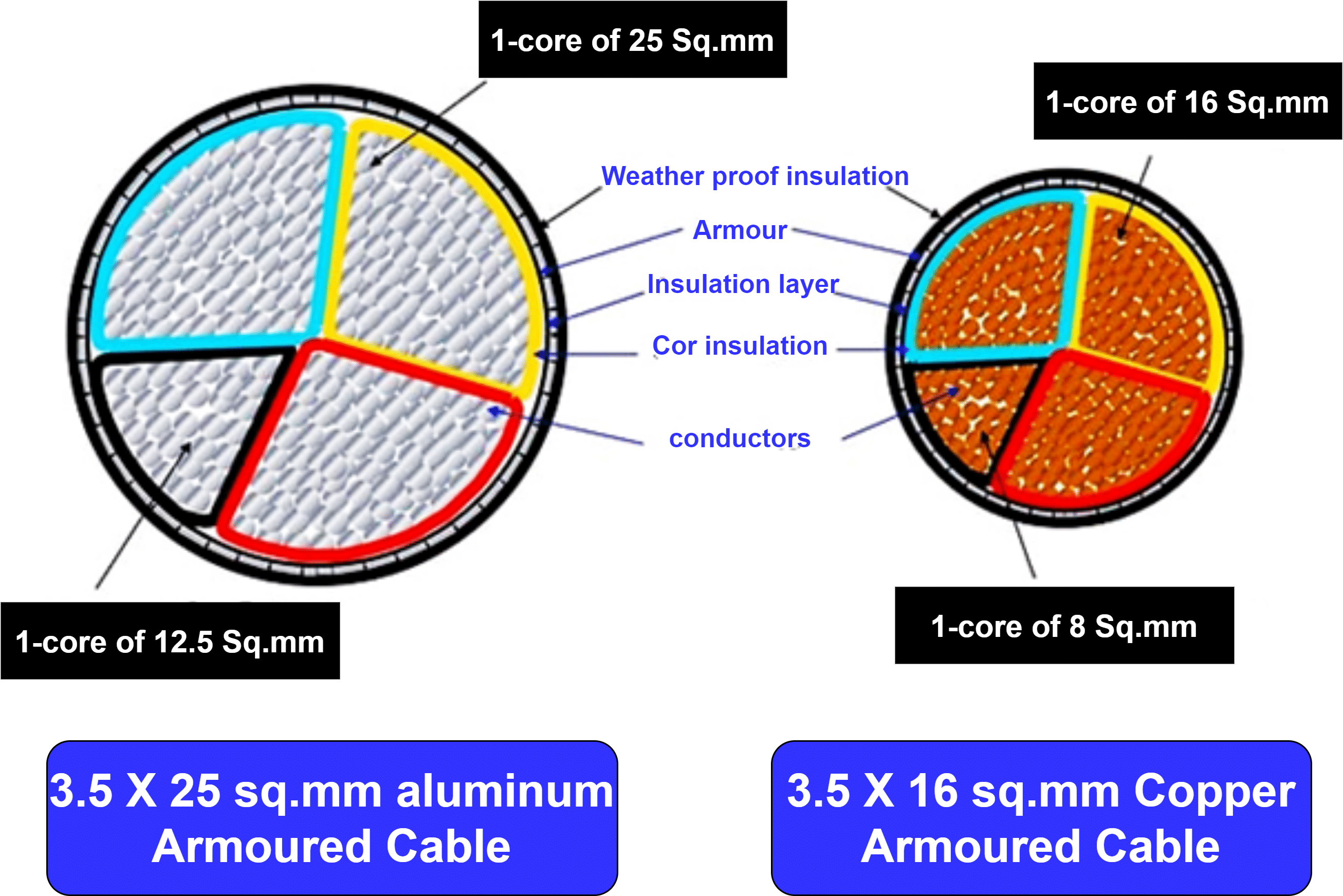
- 4 Core Cables: These cables are used where the out-of-balance current is very high and the load is non-linear. Non-linear loads like SMPS, electronic ballasts, electronic dimmers, etc. produce third-order harmonic currents, which are in phase with all the supply phases. These third-harmonic currents don’t cancel out like in the case of a balanced system, but they add up. As a result, the neutral is subjected to very high out-of-balance currents. These neutral conductors have the same thickness as the main conductor as they carry a huge current.
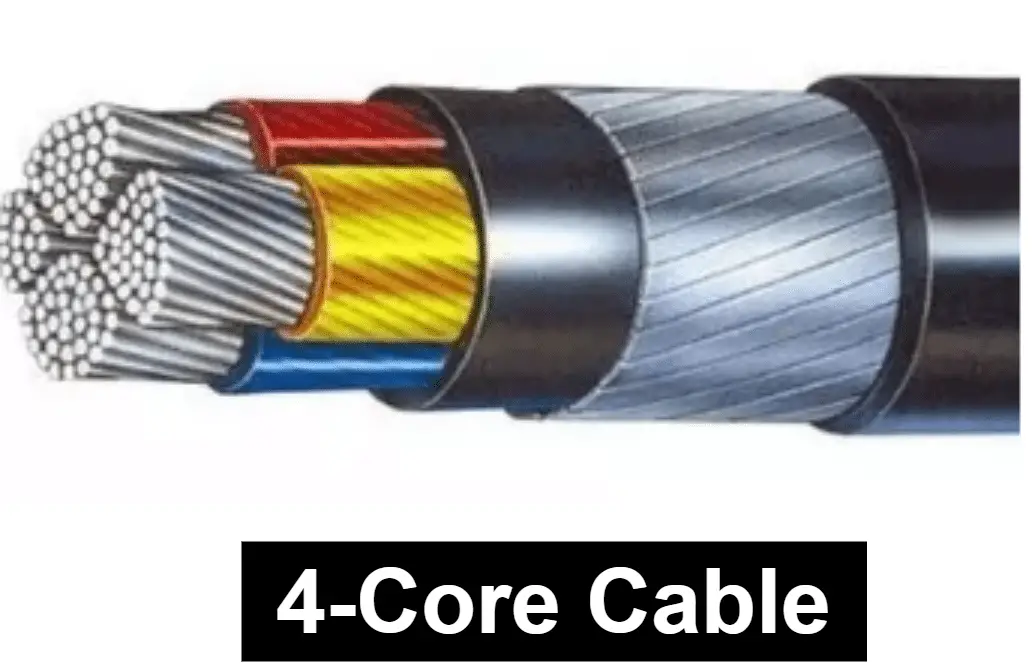
- 5 and 6-Core Cables: Used in systems where the out-of-balance or the neutral current can become much larger than the phase currents.
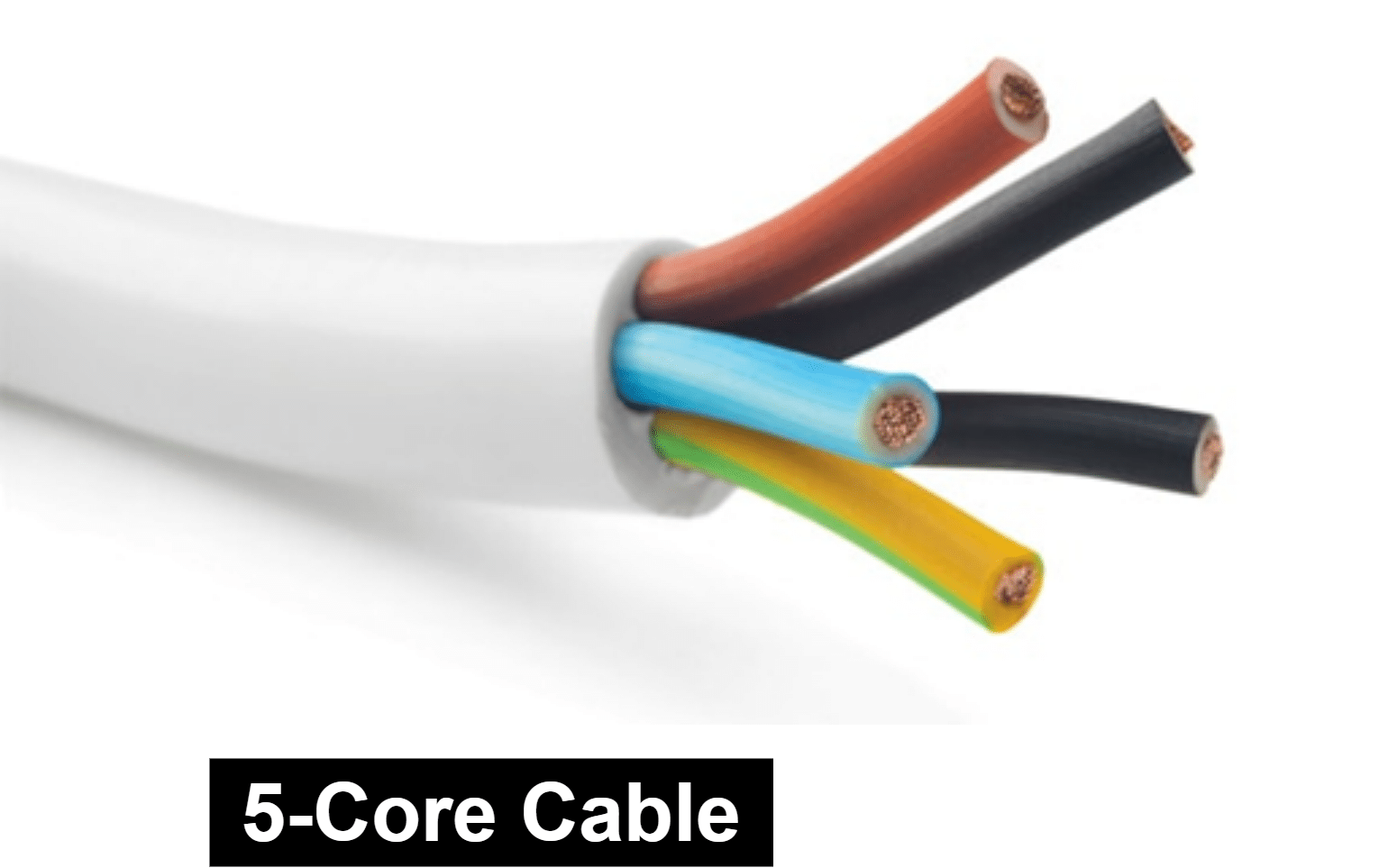
3 or 4 core cables are typically used in the case of underground cables.
Types of cables based on the type of insulation
Insulation of an underground cable plays an important role in its classification. Insulation provides safety to the internal conductors from external factors as well as their safe handling. The level of insulation required depends on the system voltage and the operating temperature.
Various materials like paper, rubber, PVC, Cross-linked polyethylene, etc., are used as insulating materials. These are selected based on their respective dielectric strength. Following are some insulating material and their respective dielectric strengths.
| Insulating material | Dielectric strength |
| PVC | 200kV/cm |
| Mica | 118MV/m |
| Teflon | 60MV/m |
| Glass | 14MV/m |
| Rubber | 12MV/m |
| Impregnated paper | 30kV/mm |
| Silicon insulator | 20MV/m |
| HDPE Insulator | 20MV/m |
| Nylon | 14MV/m |
| Porcelain insulator | 12MV/m |
| Air | 3MV/m |
| Vacuum | 30MV/m |
It should be noted that actual ratings may vary depending on various operating factors.
Classification of underground cables based on construction
Underground cables can be classified based on their respective making. These are
1. Belted Cables
In such cables, there are usually three conductors that are bunched together and held by a paper belt. An impregnated paper insulator insulates each conductor in the cable. The gaps between the conductors and the insulating paper belt are filled with fibrous material like jute, which provides flexibility to the cable and a circular shape. A metallic sheath and armoring protect this jute layer. Such cables don’t have a perfectly round shape. This is done to use the available space within the cable efficiently.
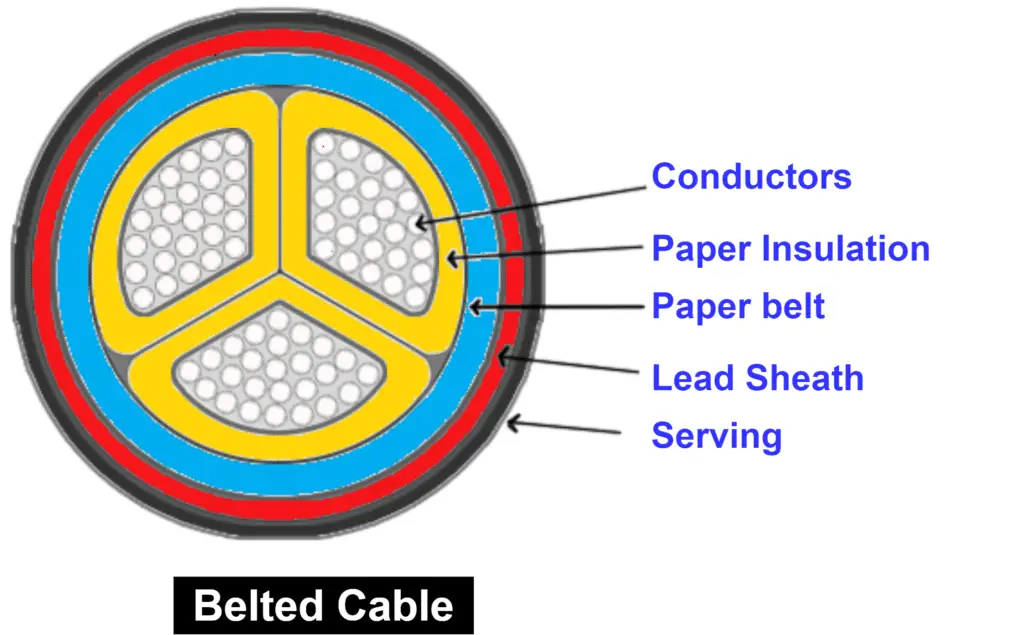
2. Screened Cables
Screened cables are of two types – H-type and S.L.-type.
H-type
In H-type cables, the individual conductors are first insulated by a paper insulator, followed by a metallic cover. Hence, these metallic covers are in contact with each other, which are then grouped by a metallic tape usually made of cover. Finally, a lead sheath is provided all around, and the lead sheath and the copper tape are grounded.
S.L. type
It is similar to H-type cables, except that individual lead sheaths are provided to each conductor instead of an overall sheath. The advantage is that the chances of conductor-to-conductor breakdown fault are minimized, and the cable gains more flexibility.
H.S.L type
These cables are a combination of both H and S.L.type cables. Each core is insulated using an impregnated paper insulator and is provided with separate lead sheaths.
Pressure Cables
For the system voltage exceeding 66kV, the electrostatic stress is severe on the cable. This may lead to insulation failure and permanent damage to the cable. To avoid this, pressure cables filled with oil or gas are used instead of solid cables to improve the dielectric strength.
Oil-filled cables
Oil is filled through the cable under suitable pressure. This oil is the one used for the impregnation of paper insulators.
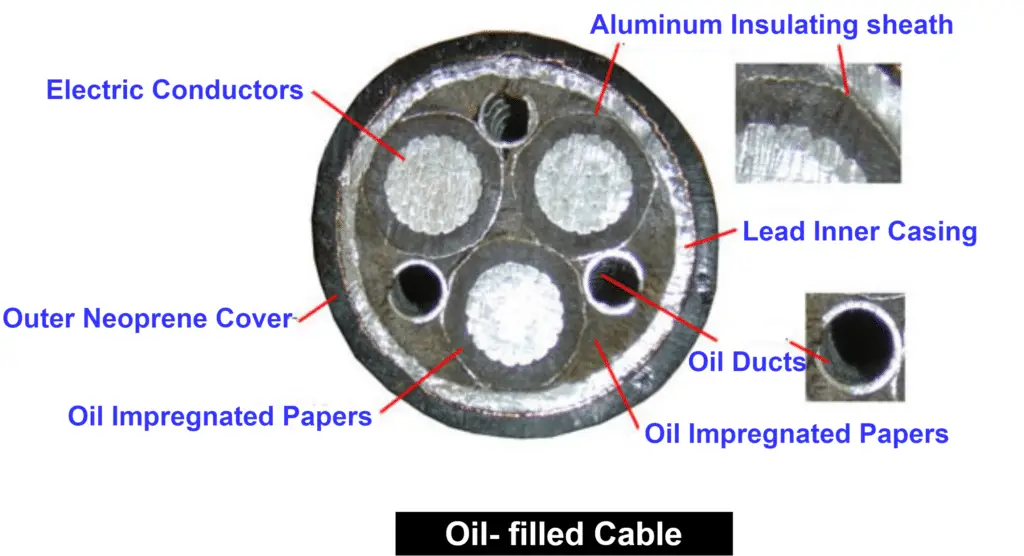
Gas-filled cables
Pressurized gas is circulated around the cable in a steel pipe.
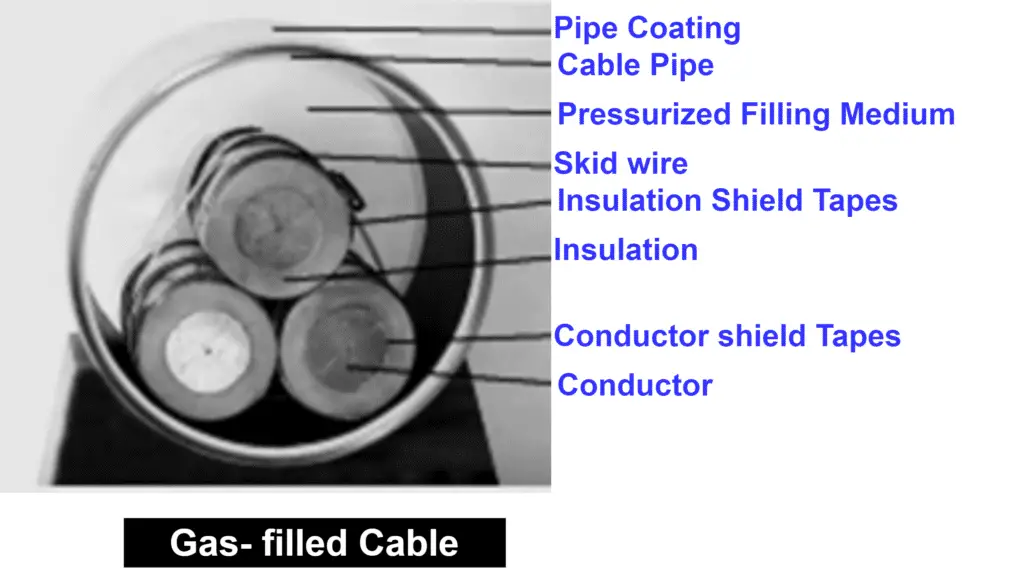
Usually, the gas is Nitrogen. Such cables are used in high-voltage transmission and are subjected to high-load currents.
Types of underground cables based on installation
- Directly buried installation: A trench is dug out, and the cable is laid without additional elements. A cooling pipe may be provided if required.
- Tunnel installation: Tunnels are dug up where the power cable has to cross a river. The cables are laid down in the tunnel. However, the installation and maintenance cost is high.
- Trough installation: Concrete troughs are dug, and the cable is laid down. The maintenance is easy and accessible as these are visible on the ground.
- Gas-insulated line installation: For power lines operating at a very high voltage, gas insulation is provided during installation. It ensures operational safety, but the initial cost is high. This is a relatively new technique of power cable installation.